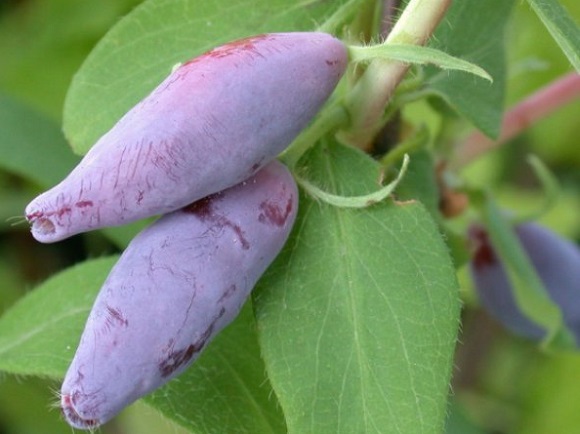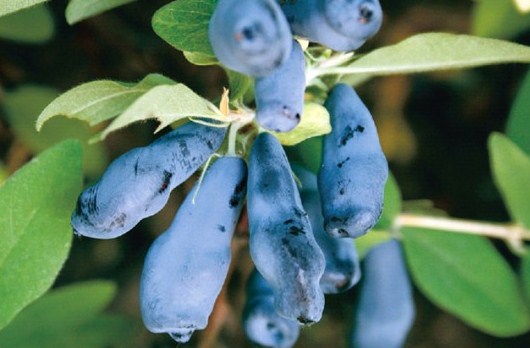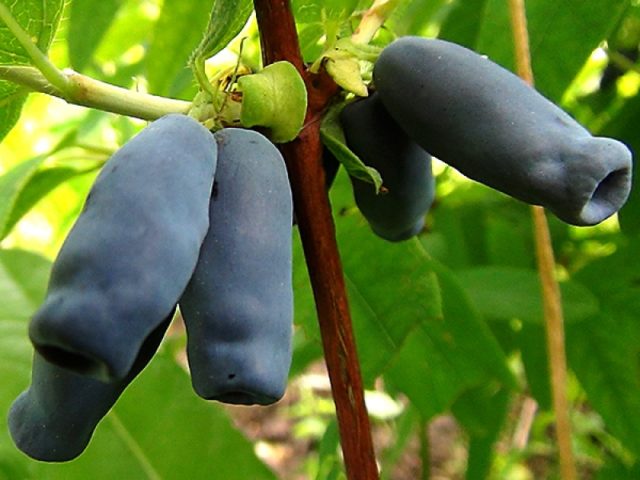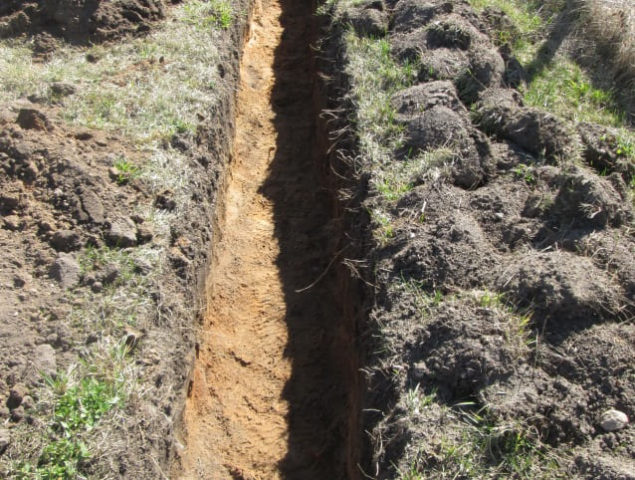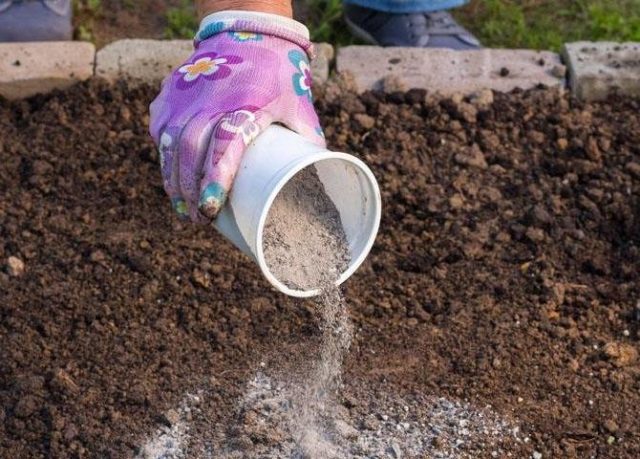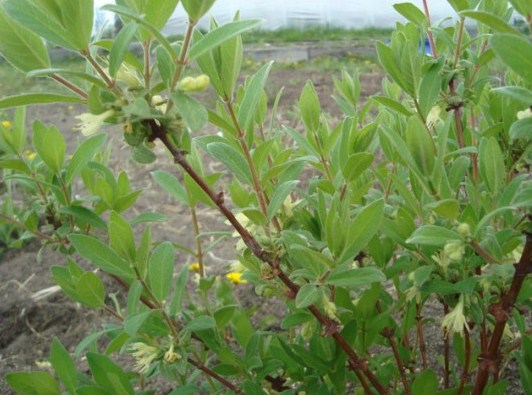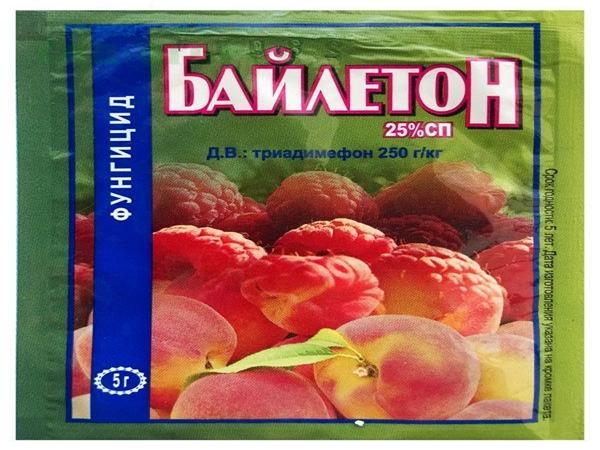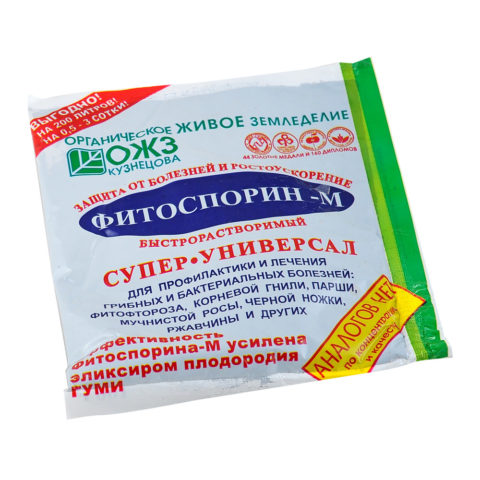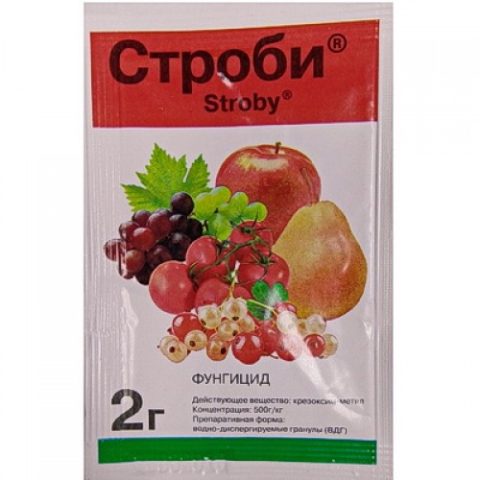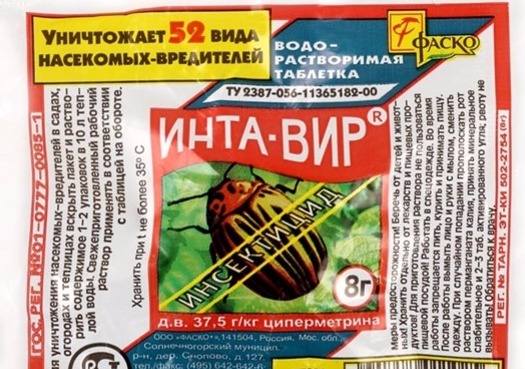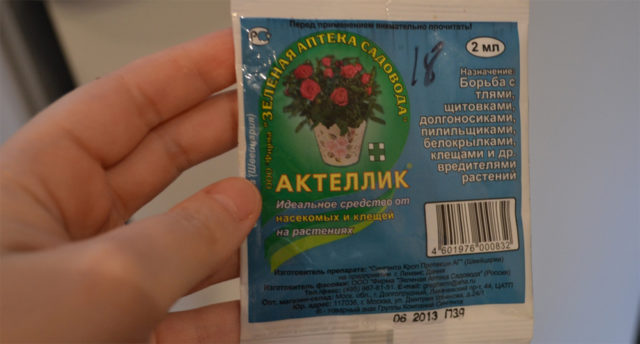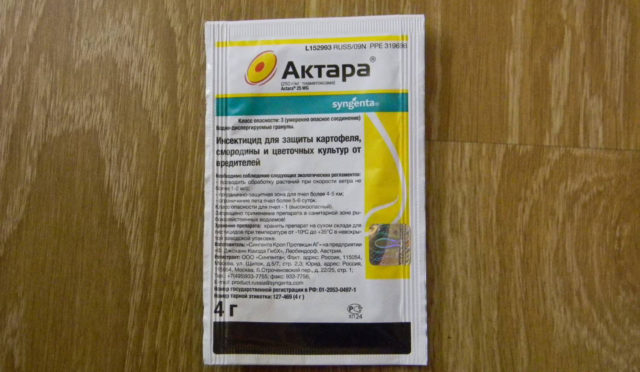Content
Planting and caring for honeysuckle in the Moscow region usually does not cause any particular difficulties, even for novice gardeners. This is a fairly frost-hardy, hardy crop, which is usually grown in the northern regions of the country, so the climate of the middle zone is quite suitable for it. In addition, the shrub is unpretentious in care and has good immunity, therefore, only the selection of a variety and a suitable place for planting is of some difficulty.
Features of growing honeysuckle in the Moscow region
Many varieties of honeysuckle are recommended for planting in the Moscow region, however, the following species are best adapted to local climatic conditions:
- Long-fruited - a variety adapted to spring frosts;
- Moraine - it is distinguished by early ripening, the variety is resistant to diseases and pests;
- Cinderella - an early ripe high-yielding variety.
When planting honeysuckle on the site, it should be borne in mind that almost all of its varieties are self-fertile. This means that several similar pollinating varieties must be placed next to the bushes. If this is not done, the harvest from the plants will not work, even with the best care. The optimal spacing between two adjacent bushes is 2-3 m.
Most varieties successfully take root in the Moscow region and bear fruit for 20-30 years. In this regard, the place for planting should be carefully selected - it is not recommended to transplant the plant.
When to plant honeysuckle in the suburbs
You can plant edible honeysuckle in the Moscow region both in spring and autumn. It is best to select two-year-old seedlings with developed roots for planting in this region. The site is prepared before this - they carefully dig up, remove weeds and apply fertilizers.
How to plant honeysuckle in the spring in the suburbs
The climate in the Moscow region is quite mild, however, it is better to play it safe and plant honeysuckle in the spring. This will give the plant more time to settle down in a new place and accumulate enough nutrients for wintering.
How to plant honeysuckle in the fall in the suburbs
If the seedlings have an open root system, you can plant in open ground in the fall, however, do not delay with this. If you plant honeysuckle too late, the plant will not have time to take root in a new place in the Moscow region before the onset of frost. The best period for planting is the last decade of September. The deadline is early October.
Planting and caring for honeysuckle in the Moscow region
Caring for honeysuckle in the spring in the Moscow region is reduced mainly to sanitary pruning, in the fall, young bushes are covered for the winter. In the summer, it is also easy to take care of the plantings - it is enough to add 1-2 dressings per season and water the plants in a timely manner. The culture rarely suffers from diseases and pests, therefore, chemical treatments are not necessary. Planting honeysuckle is pretty standard for a fertile bush.
Selection and preparation of the landing site
The choice of a place for planting and its preparation is of great importance for good fruiting of honeysuckle. The shrub develops best in an open and spacious area - this culture is a long-liver and grows strongly over time, so plants should not be planted too close. It is also allowed to grow honeysuckle in partial shade, under fruit trees.
Another requirement is that bushes should not be placed in lowlands in order to avoid stagnation of water in the soil. Despite the fact that the shrub is quite resistant to adverse environmental conditions, excessive moisture will not be beneficial to it. A site with a high level of groundwater occurrence is also not suitable.

The recommended type of soil for honeysuckle in the Moscow region is forest gray soil and loam
Landing rules
Planting honeysuckle in the Moscow region is carried out taking into account the following rules of agricultural technology:
- The plant does not have a powerful root system, so it will be enough to dig a hole for the seedlings with a diameter of about 50 cm and a depth of about 40 cm.
- A drainage layer must be placed on the bottom. You can use small pebbles, expanded clay, crushed stone, broken brick or clay shards for this.
- Fertilizers are poured over the drainage - 3-4 kg of humus.
- Then the honeysuckle seedlings are prepared for planting - all damaged branches are cut off, as well as the roots.
- After that, the plants are lowered into the pit, gently straightened and sprinkled with earth. When the dug space is full, the soil is lightly tamped.
- Complete the planting procedure with abundant watering and mulching. For this, you can use peat, humus or sawdust.
When planting honeysuckle, the root collar must not be lowered below 7-8 cm from the ground
Watering and feeding
Honeysuckle does not like waterlogging, but watering cannot be neglected. Young seedlings are especially sensitive to excessive dryness of the soil - during the first 7-10 days after planting, they are watered daily. Water consumption during this period is 8-10 liters for each bush.
Adult bushes are watered once every two weeks, spending about 25-35 liters of water, however, in the spring this is done a little more often so that the plants gain green mass better. Also, water consumption is increased during the fruiting period.
In order for oxygen to better enter the roots, planting care includes periodic loosening of the soil, and the procedure is carried out on the same day as watering. It is not necessary to loosen too deeply, since the roots of honeysuckle are rather fragile - they can be easily damaged.
Also, it will not be superfluous to mulch the trunk circle immediately after watering. So it will be possible to increase the interval between them, and thereby facilitate the care of plants - mulch retains moisture well in the soil and prevents the soil from drying out. The optimum thickness of the mulch layer is 3-5 cm.In the fall, it can be increased to 7 cm.
As for fertilizers, for the first time the bush is fed only in the third year after planting in open ground. Any nitrogen-containing complexes are introduced into the soil - ammonium nitrate, ammonium sulfate, carbamide, etc. 10-15 g per 1 m3 is enough2, no more. Subsequently, honeysuckle in the Moscow region is fertilized every two years with organic matter - humus, bird droppings or rotted compost. 1 m2 accounts for about 2.5 kg of fertilizer.
You can feed the honeysuckle again 2-3 weeks after harvest.In late summer and autumn, wood ash is introduced into the soil in the form of a powder or infusion, as well as complex fertilizing for berry bushes. At the same time, it is important to study their composition - there should be a little nitrogen there, since its excess in the soil negatively affects the preparation of honeysuckle for winter.
Pruning
Almost all varieties of honeysuckle have a fairly dense crown, so pruning shoots is a must-have item for caring for shrubs that should not be neglected. The procedure is carried out 1-2 times a year at least. At the same time, in the spring in the Moscow region, sanitary pruning is usually carried out, and in the fall, honeysuckle is usually already formed in September-October.
For the first time, formative pruning is carried out 5-6 years after planting in open ground. Most species for the Moscow region grow rather slowly, so do not cut the shoots too much. The optimal timing for this procedure is shortly after the honeysuckle has shed its foliage. The whole process boils down to the removal of dried, weak and damaged branches, and the crown is also thinned out at the expense of old shoots. Cutting points are lubricated with garden pitch.
Best of all, honeysuckle bears fruit in the suburbs, if you form a bush in five trunks, the most powerful.
Wintering
Despite the fact that honeysuckle belongs to winter-hardy crops, young bushes should be covered for the winter. To do this, it is enough to cover the shrub with a bag of synthetic fabric, having previously removed the curly varieties from the supports.
Adult plants in the Moscow region do not need additional shelter.
When honeysuckle ripens in the Moscow region
Sometimes inexperienced gardeners may be embarrassed by the fact that honeysuckle does not bear fruit for a long time, even despite proper planting and good care. This is completely normal for this crop - the shrub gives its first crop only 2-3 years after planting in open ground. Until this time, the plant develops a root system.
The timing of harvesting depends on the variety, but in general, honeysuckle begins to bear fruit 1-2 weeks earlier than strawberries. This usually occurs in the first half of June for early maturing varieties and early July for mid-season varieties.
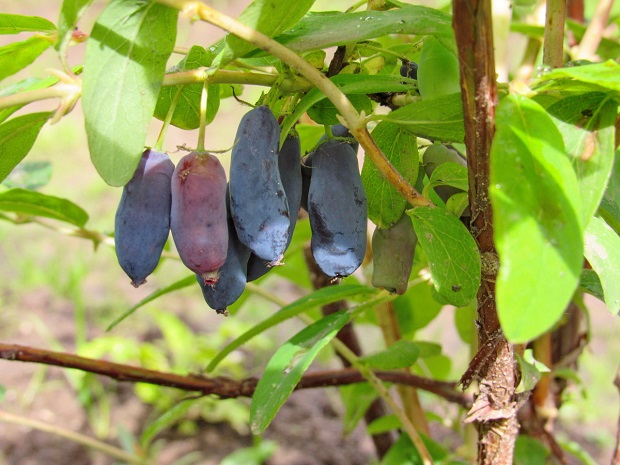
Fruiting of honeysuckle lasts for 1-1.5 months
Gathering honeysuckle in the suburbs
The honeysuckle harvest in the Moscow region is harvested taking into account the following features:
- Almost all varieties of honeysuckle quickly crumble soon after ripening. In order to slow down this process, plantings should be watered more often and more abundantly closer to harvest. If this is not done, you can lose part of the harvest, even if the care was good before - they will begin to crumble, including unripe berries.
- Harvest as the fruit ripens. Do not wait until all the berries are ripe. If you do not remove those that are ripe first, the bush will simply throw them off.
- If it is not possible to pick berries from honeysuckle every day during the fruiting period, caring for the plant can be simplified with a little trick. A blanket or film is spread directly under the bush - this will save most of the harvest, since the berries will not hit the ground and rot on it.
Reproduction
Honeysuckle can be propagated in the Moscow region both by the seed method and by vegetative methods. Preference should be given to the latter, since seed reproduction inevitably entails the loss of varietal traits.
One of the most suitable breeding methods for honeysuckle is summer cuttings. This process in the Moscow region takes place according to the following scheme:
- First, green cuttings are cut from the bush, but so that at least two buds are present on each, preferably three. Also, the cuts should contain 1-2 internodes.
Leaves on cuttings must be cut to 1/2 the length
- 2 cm is left under the lowest kidney and the end is cut diagonally. So the planting material will more easily enter the ground.
- Immediately thereafter, the shoots are placed in water. After a few hours, they are treated with any rooting stimulant and planted in a container.
- By the beginning of autumn, the cuttings should form a sufficiently developed root system.
In September, seedlings can be transplanted into open ground
Diseases and pests
Edible honeysuckle is extremely rare in the Moscow region. The most significant threat to the shrub is powdery mildew, however, the appearance of the fungus can be easily prevented - it is enough to treat the plantings with any specialized fungicides. For prophylaxis, the bushes are sprayed twice: at the very beginning of the growing season and three weeks after the end of fruiting. The following drugs have proven themselves best in the fight against powdery mildew:
- Bayleton;
- Alirin-B;
- «Fitosporin-M ";
- Strobe.
Pests also rarely pester honeysuckle in the Moscow region. On the other hand, it will not be superfluous to include 1-2 preventive treatments against aphids in plant care. It is best to use general-purpose insecticides for this:
- Inta-Vir;
- Actellik;
- Aktara.
Conclusion
Planting and caring for honeysuckle in the Moscow region, in fact, is not much different from how this crop is grown in the northern regions. The main thing is to choose the right variety for the local climatic conditions, and plant the plant taking into account the recommended terms for the Moscow region.
You can learn more about the features of planting and caring for honeysuckle in the Moscow region from the video below:
